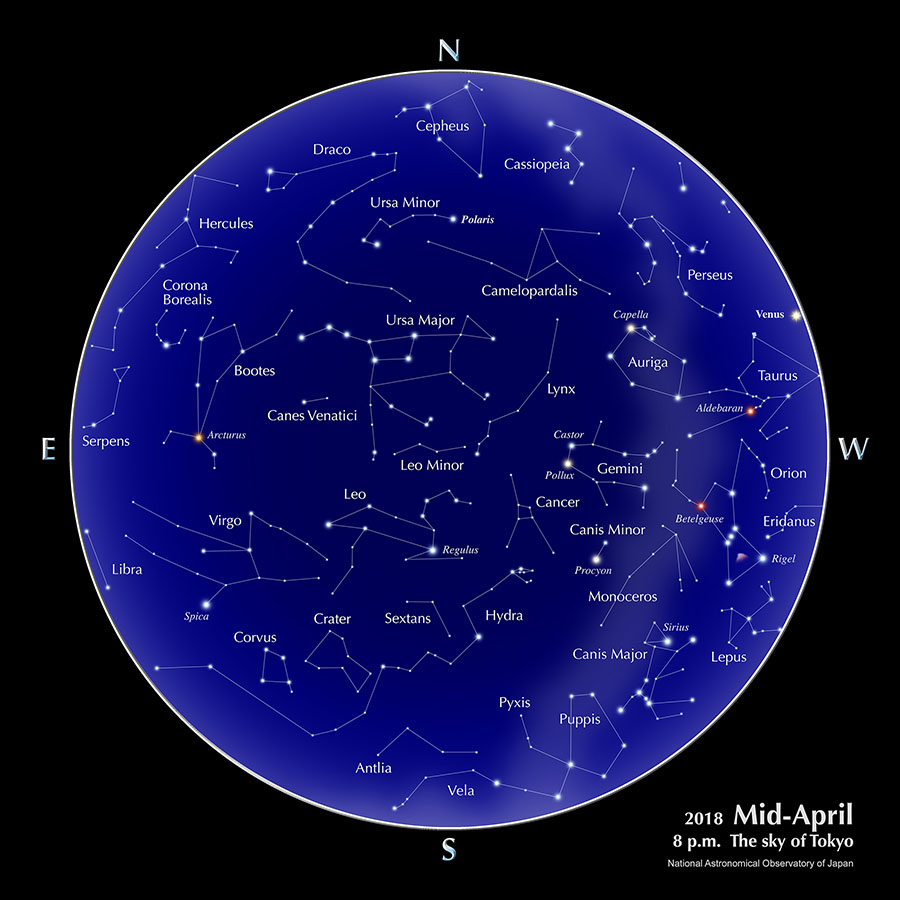The sky of Tokyo, Calendar, Planets (April, 2018)
The sky of Tokyo

Calendar (April)
| 2 | Mercury at inferior conjunction |
| 8 | Last Quarter Moon |
| 14 | Mercury at stationary point |
| 16 | New Moon |
| 18 | Saturn at stationary point / Uranus at conjunction |
| 23 | First Quarter Moon / Lyrid Meteor Shower peaks around this time. (The best visibility is before dawn on the 23nd. About 10 meteors per hour are expected. Conditions are good after the Moon sets around Midnight.) |
| 29 | Showa Day [Showa-no-hi] (national holiday) |
| 30 | Holiday / Greatest Western Elongation of Mercury / Full Moon |
The days for the peak activities of the meteor showers are based on the predictions of IMO(International Meteor Organization).
Planets
- Mercury
- Mercury reaches inferior conjunction on April 2. From the beginning to the middle of the month, its position is close to the Sun, making observation difficult. It reaches its greatest western elongation on April 30 and it can be seen before sunrise in the lower eastern sky, but its elevation is not even 10 degrees at 30 minutes before sunrise.
- Venus
- Venus shines in the lower western sky after sunset. Its brightness is -3.9 magnitude.
- Mars
- Mars moves east (direct motion) in the constellation Sagittarius. It shines in the southern sky before sunrise. Its brightness is 0.3 magnitude to -0.3 magnitude.
- Jupiter
- Jupiter moves west (retrograde motion) in the constellation Libra. Seen from Tokyo in late April, it rises before 8 p.m. and shines in the southern sky around midnight. Its brightness is -2.4 magnitude to -2.5 magnitude.
- Saturn
- Saturn moves east (direct motion) in the constellation Sagittarius. It reaches its stationary point on April 18. After passing the stationary point, it moves to the west (retrograde motion). At the stationary point, it seems to stop with respect to the stars. It shines in the southern sky before sunrise. Its brightness is 0.5 magnitude to 0.4 magnitude.
Reference: Ephemeris Computation Office, NAOJ
With the “Sky Viewer” you can easily explore the appearance of a typical urban night sky (planets and constellations are visible). The Celestial Phenomena section of the glossary explains the planetary phenomena terms: greatest elongation, opposition, conjunction, stationary, etc.